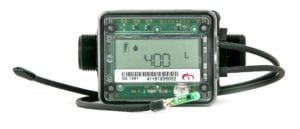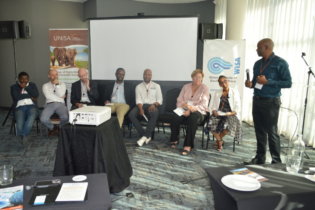Water service authorities are seeing an increasing need to install water management devices to address growing water challenges. WASA speaks to Marcus Thulsidas, business development director, Utility Systems, about how the company’s smart electronic water control devices can assist utilities.
The internet of things (IoT) and automation are revolutionising the water monitoring and billing environment. What are the opportunities and advantages in Southern Africa?
MT One of the market’s biggest pain points is the efficient management of the reticulation system. In many instances, there is not enough data to optimally use the resources available within a local authority for this task. There is a growing need for data to guide decision-making and streamline processes, and the move towards IoT and automation supports this. Our advanced metering systems offer utilities many advantages, including advanced warnings and alerts on things like tampers and leaks, so that resources can be effectively distributed. Our solutions also aid local authorities with drive-by and remote meter reading and control systems. This not only allows for faster and more accurate data capturing, but also allows authorities to monitor infrastructure in high-risk areas where access is limited. Accuracy is vital when it comes to data. We are NCRS approved to function with multiple brands of measurement elements and our measurement controls are of a C-Class nature, meaning they are accurate to within 2% on flows between 15 ℓ/h and 3 000 ℓ/h. One of the biggest challenges for South African water utilities is accurate billing. How do Utility Systems’ products address this challenge?
One of the biggest challenges for South African water utilities is accurate billing. How do Utility Systems’ products address this challenge?
Much of South Africa’s water billing systems rely on estimation, largely because of limited resources available to perform meter readings as well as inaccessible and unreadable meters.Our products – like the Water Management Device (WMD), utiliMeter and Aquadata – allow municipalities to perform unscheduled meter reading with drive-by, walk-by and remote systems. We utilise advanced meter reading (AMR) and advanced metering infrastructure (AMI) to deliver accurate data in near real time, providing municipalities with the most accurate billing data.
We tailor our solutions to meet the particular needs of each client. One of our largest clients, the City of Cape Town, is now using over 200 000 AMR-enabled devices to provide more accurate meter readings to its customers and ultimately increase its revenue.
How can this translate into increased revenue collection?
By reducing estimation with accurate data, municipalities can bill more accurately for water consumption. We also offer prepaid metering solutions with AMR data collection, ensuring municipalities get upfront payment and know exactly how much water is used at a particular point. Utility Systems developed the first commercially available Standard Transfer Specification (STS) Association approved prepayment water management device. When linked to a pulse output water meter, the WMD enables two-way communication, configuration and valve control as well as the option for STS-approved prepaid water supply. Our system also caters for free basic water requirements at a device level, meaning everything is managed by the device itself. It is able to dispense a predetermined amount of water daily at scheduled times, thereby providing the ability to limit a consumer to a finite level of supply. It also comes with a top-up option for those who wish to pay for additional water over and above their free allocation.What about bulk water management?
The size of our solution offerings goes up to 50 mm. Our bulk metering solution, capable of time and volume switching, has been very successful in school environments where water consumption and losses need to be managed. We have implemented our bulk meters in several KwaZulu-Natal schools with great success. These are programmed to cut off supply between 17:00 and 05:00 to reduce losses from leaks and open taps, resulting in financial savings of up to 40% on the water bill.










